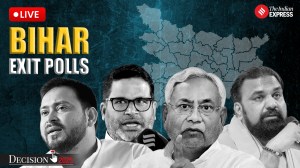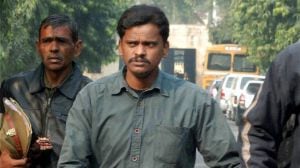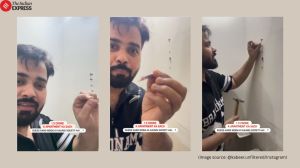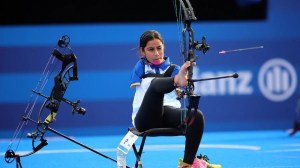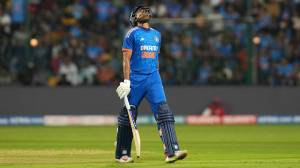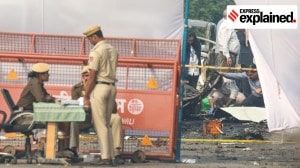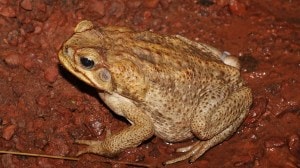Strong traces of neo-realism
Mela,based on a story by Taradas Bandopadhyay,revolves around a village fair that is still the main source of entertainment in remote villages
Mela
Screenplay and direction: Dhananjay Mandal
Music: Chandan Roychoudhury
Cast: Paran Bandopadhyay,Rudranil Ghosh,Mouli Bhattacharya,Sunil Mukherjee
Mela,based on a story by Taradas Bandopadhyay,revolves around a village fair that is still the main source of entertainment in remote villages of West Bengal. The fair is a small cultural world wherein villagers from far and near come in search of fun,music,games,plays,and friends. A colourful array of goods from imitation jewellery to vermillion powder,earthen pots and pans to fast-food cooked and served hot straight from earthen ovens is sold in the temporarily set-up stalls. Mela is a simple story woven into celluloid with sound,colour,music,landscape and characters drawn as if from real life.
Bishu Mama (Paran Bandopadhyay) arrives with Ratan (Rudraneel Ghosh),his nephew,to set up a fried crisps stall at the Rash Purnima Mela in a remote village. He offers free tiffin to the organisers in exchange for a concession on the stall rent. Bishu Mama makes friends with Tarini Khuro who used to be an actor in jatra performances and still recites lines from his roles. Bishu Mamas love for jatra songs brings the two together. They share memories,old jatra songs and dialogue on the banks of an old pond behind the fair grounds. Ratan is attracted to pretty Alta (Mouli Bhattacharya),an orphan who fries moong dal jalebis in her uncle Brojos (Sunil Mukherjee) sweetmeat stall. Hriday and Kali are a young couple who tag their kids along during the fair to run their earthenware stall. The stall visitors are a rainbow of people- young housewives buying vermillion powder,young girls bargaining over imitation bangles,two schoolboys getting impatient for their moong dal jalebis and so on. A professional group of jatra performers put up a performance. Lines of dialogue and songs float to where Ratan and Alta are exchanging sweet nothings.
Technical expertise
Mela looks back to Italian realism that influenced filmmakers like Bimal Roy and Satyajit Ray in the 50s. Like neo-realist films,Mela focusses on normal experiences rather than on exceptional ones. The film has been shot entirely on location on the actual site of a real village fair. Mandal has used a blend of non-glamorous professional actors and total amateurs from the village, who have never faced a movie camera before. This is driven by the striving for authenticity. The film is enriched by touches of humour and irony. There is humour in the way one of the fair organisers insists on peppering his Bangla with wrong English to impress people. When Ratan asks Bishu Mama if he could find a proper toilet around,Bishu Mama points out to the vast fields and says,Why would you need a toilet for when there is such a large field? Like a neo-realist film,Mela draws significant implications out of ordinary events that usually pass unnoticed.
Chandan Roychoudhurys multi-layered musical score comprised of Bishu Mamas songs from jatra palas,Ratan humming away popular Hindi hit numbers,the loudspeakers blaring Hindi songs,modern Bengali songs and Tagore numbers is a highlight of the film. The acting is natural and seamless. Most of the actors are devoid of make-up or costume. The neighbourhood around the fair – an old temple,a dilapidated mansion of the previous landlord,the dirty pond with branches of trees overhanging on its murky waters,an earthy road leading away from the fair grounds flanked by the greenery and the brown fields on either side make the picture complete. The film suffers from two drawbacks – one is the use of some typical stereotypical characters and the other is the bad quality of post-production colour processing that mars the visual richness of the film to a large extent.
Verdict :
The film deserves a four-star rating – for the music,the acting,the neorealistic treatment and approach and the direction.



- 01
- 02
- 03
- 04
- 05








